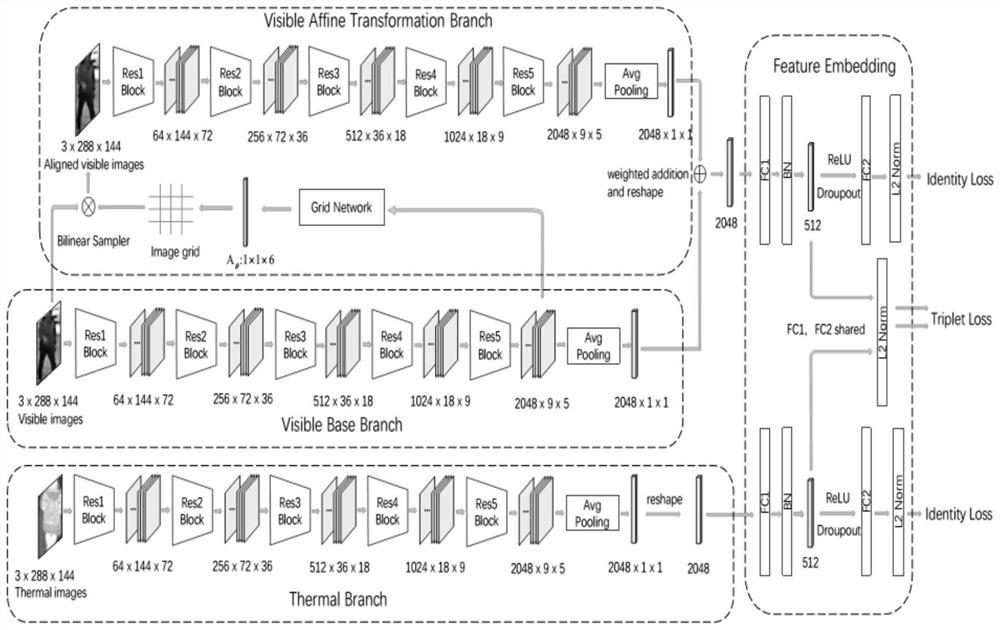Cross-modal pedestrian re-identification method based on adaptive pedestrian alignment
A pedestrian re-recognition, cross-modal technology, applied in character and pattern recognition, instruments, calculations, etc., can solve the problems of image misalignment, visible light image difference, misalignment, etc., to achieve the effect of improving accuracy
- Summary
- Abstract
- Description
- Claims
- Application Information
AI Technical Summary
Problems solved by technology
Method used
Image
Examples
Embodiment Construction
[0012] The present invention will be further described below in conjunction with accompanying drawing:
[0013] The network structure and principle of the MAPAN model are as follows:
[0014] This network model framework learns feature representations and distance metrics in an end-to-end manner while maintaining high discriminability. It mainly consists of two parts: a multipath network for feature extraction and a fully connected layer for feature embedding. Specifically, the multipath network consists of three branches: the visible light affine transformation branch, the visible light base branch and the infrared image branch, none of which share weights. The visible light basic branch has the same structure as the infrared image branch, and both use the residual network ResNet50 as the pre-training model, which includes 5 downsampling blocks and 1 average pooling layer. The visible light affine transformation branch consists of a grid network, a bilinear sampler and a re...
PUM
 Login to View More
Login to View More Abstract
Description
Claims
Application Information
 Login to View More
Login to View More - R&D
- Intellectual Property
- Life Sciences
- Materials
- Tech Scout
- Unparalleled Data Quality
- Higher Quality Content
- 60% Fewer Hallucinations
Browse by: Latest US Patents, China's latest patents, Technical Efficacy Thesaurus, Application Domain, Technology Topic, Popular Technical Reports.
© 2025 PatSnap. All rights reserved.Legal|Privacy policy|Modern Slavery Act Transparency Statement|Sitemap|About US| Contact US: help@patsnap.com



